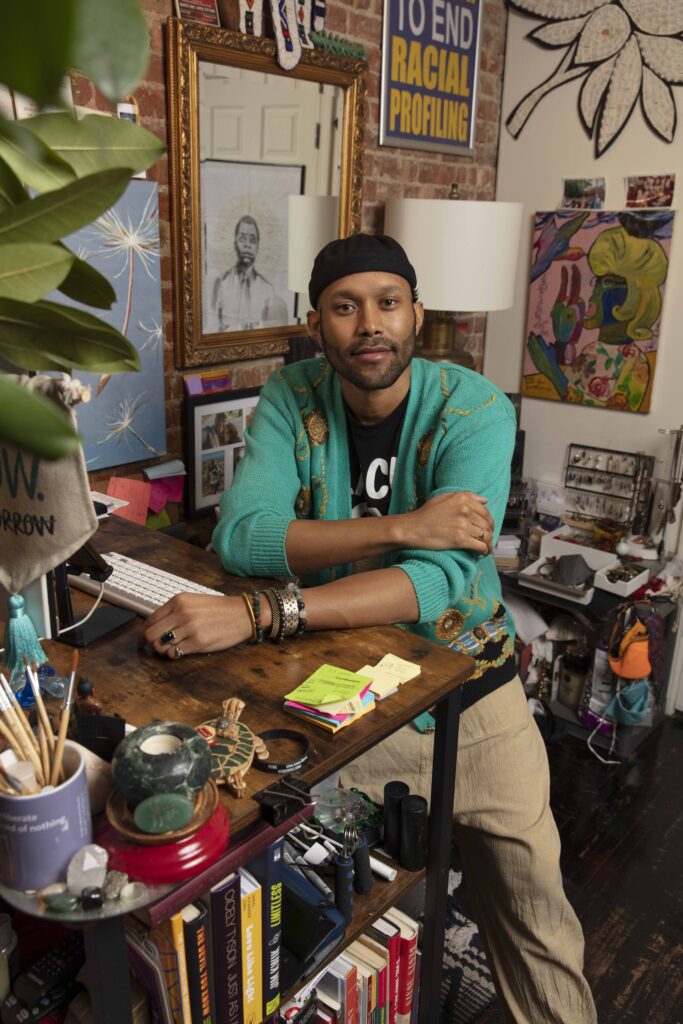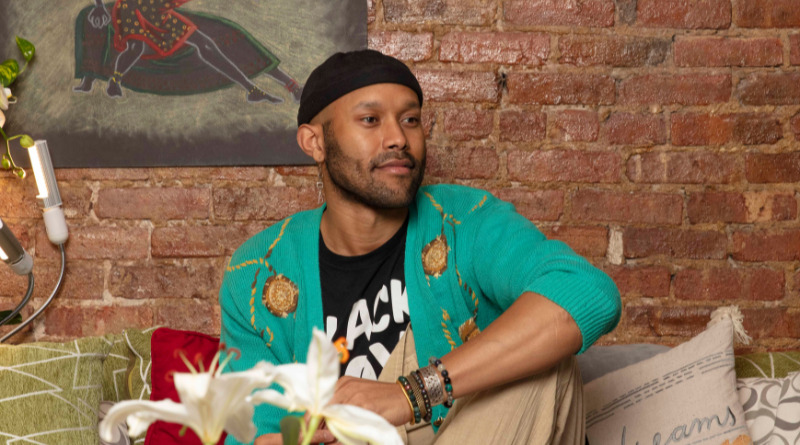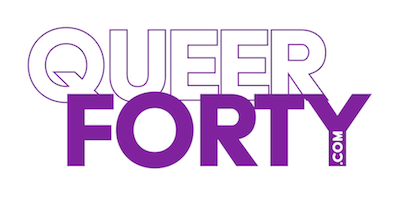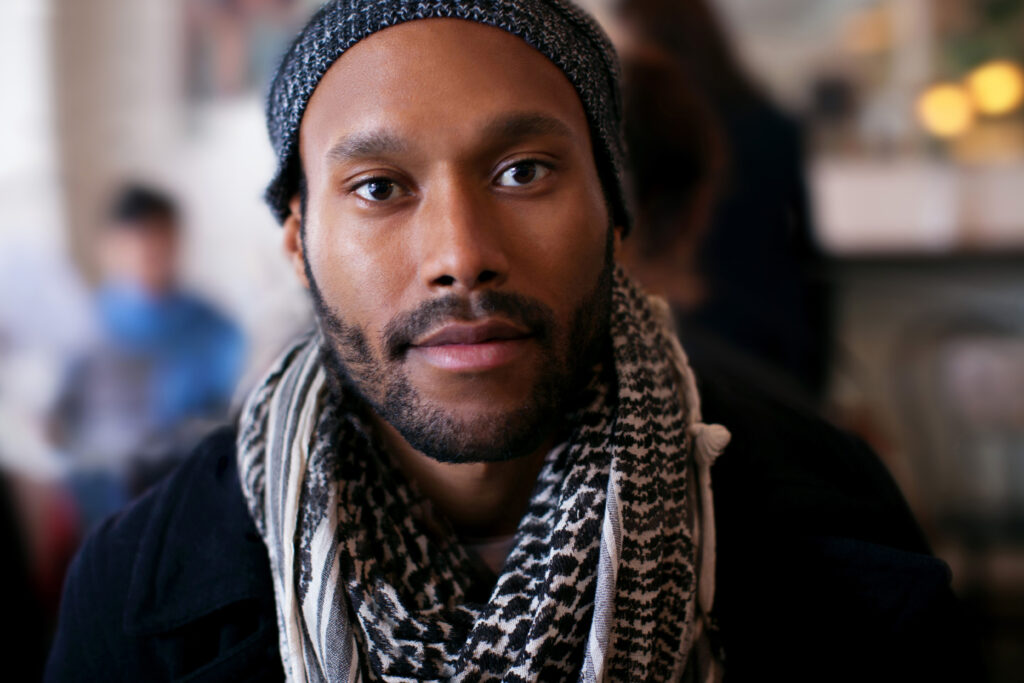Meet Jonathan McCrory, queer visionary helming the National Black Theatre
With the pandemic, gentrification, and inflation practically destroying live queer spaces, it’s important to pay homage to the queer and LGBTQIA+ movers and shakers in the live arts fighting to keep our performance spaces and works thriving. Meet Jonathan McCrory, Executive Artistic Director of the National Black Theatre (NBT).
Jonathan McCrory (he/him/his) identifies as a cis queer man, but he describes his spirit is ‘she’. This exceptionally talented individual is the and is an Obie Award-winning and Audelco nominated artist based in Harlem, New York City.
Throughout his career McCrory has directed many critically acclaimed productions and concerts such as Dead and Breathing, HandsUp, Hope Speaks, Blacken The Bubble, Last Laugh Enter Your Sleep, Iron John (National Alliance for Musical Theatre), How the Light Gets In (2018 & 2017 at New York Music Festival), and Klook (NAMT).
He is also a founding member of several theatrical and professional companies including: Harlem Nine, Next Gen Network, and the Black Theater Commons which promote Black artistry and aide disenfranchised individuals in professional networking.

Due to all this impressive work, Jonathan has been acknowledged by Crain’s New York Business on their 2020 list of Notable LGBTQ Leaders and Executives and was recognized as one of the 40 under 40 Rising Stars in 2016 by the New York Nonprofit Media.
We recently had the opportunity to sit down with this visionary to discuss his work and the National Black Theatre.
Queer Forty: Hi Jonathan, thank you for joining us. Can you please tell us about the National Black Theatre and the work that it does?
Jonathan McCrory: Yeah! So, The National Black Theatre, founded by visionary entrepreneur and artist Dr Barbara Ann Teer in 1968, is a half-century old organization that is dedicated to the liberation, articulation, and cultural autonomy of black and brown folks; creating a cultural destination for that identity to resonate and vibrate.
What I love about NBT is that it is currently still stewarded by a woman of color and, fortunately for us, it is the daughter of Dr Barbara Ann Teer, Sade Lythcott. We are dedicated to helping to transform the psychic traumas that block people from being able to be seen. One of the original sins that America still hasn’t reckoned with is its erasure of Blackness, its anti-Blackness, and until it’s able to liberate the Black consciousness, how can it fully liberate society? We are part of the elixir of that liberation.
We do that through our creative programming and mainstage productions. We have residency programs—there is the director residency, a player residency and a producer residency. We also do this through partnerships with cultural institutions and cultural entities to bring our theory of change into a more nationalized zeitgeist and into localized communities that need it.
In addition, we have an alternative learning department, which I feel is the soul of National Black Theatre. The alternative learning department creates conditions for us to talk to young people and adults, creating moments of intervention that can say: What does it look like to fall in love with yourself? Or enables us to have conversations around voting rights and gentrification.
Queer Forty: That’s so so important, especially nowadays. How did you personally get started with the National Black Theatre in 2012 and what has kept you there for the last ten years?
Jonathan McCrory: When I was growing up in DC, I was able to really be groomed by a lot of beautiful Black cultural icons, Black cultural thought, Black cultural community, and one part of that community tethering was the Duke Ellington School of the Arts which is one of the oldest Black arts high schools in the country, founded by Peggy Cooper Cafritz and Mike Malone.
When asked by the chair of my department what I wanted to do with my life and where I wanted to go in junior year, I said I wanted to study musical theater at NYU. I also said in that same breath that I wanted to run a Black theater in Harlem that owned their own space dedicated to doing Black work and I wanted to be the artistic director of it. And the chairman was like, “That’s really particular, where is that coming from”?
My whole thought was that when I decided to be a Black artist, my birthright was to be able to work in a space that would allow for me to live in my abundance, that allowed for me to dream in my abundance and to grow in my abundance and to see a space that looked like me. And I knew that it was possible because I always had known something like Alvin Ailey existed, right? I wanted to be a part of the legacy of establishing that for Black artists. And so, the then chair of my department said “well I think you should look at National Black Theatre as a potential place to think about.”
Jumping ahead a bit, I did end up going to NYU and I later made friends with Michele Shay, a soap opera and Broadway legend who had seen my piece Blacken the Bubble. She put me in touch with Sade Lythcott, we met for tea, and literally, I have not left her side or the NBT ever since.
Queer Forty: Clearly you were meant to do this. Can you tell us what the reality of being a Black creative in New York City is in 2023?
Jonathan McCrory: To be a Black creative is to be a resilient force that should be honored and celebrated. We are living in a time where art is being taxed to solve our existential crisis of boredom and also our existential crisis of pain, and we’re not necessarily creating conditions for the artists who are having to hold the weight of that to be equally compensated.
I toss my hat to anyone who is deciding to be an artist right now. They’re having to figure out how to be CEO of their own destiny. They’re having to figure out how to create a kind of resiliency inside of their economic structure of how they move this conversation of the work forward while also staying soft enough to do the work and the craft.
Queer Forty: How does race and queerness inform your artistic expression?
Jonathan McCrory: I will say race informs it only as it is a construct I’m trying to dismantle. Race as a construct has been forged by white men to break up the known world in unscientific ways that create a divisive force that has been used to conquer the world; and particularly to conquer the Black body to be de-located from Africa and de-located from this notion of actually having land to claim.
When I think about my queerness and about the landscape of my queerness—I think what informs my work is that I want spaces to be queer. I want spaces to be queer from the space of how do I de-normalize? How do I de-normalize the structures? I will say that what’s powerful about queer culture and queer people is that our very essence has always been positioned as an elixir in generating culture, in generating the spiritual norms.
The native people have this notion of Twin Spirits. Also, when you think about it biblically, they talk about how angels are neither man nor woman, they are both. That is queer to me, this notion of who was able to download from on high, who is a healer in many native cultures. They talk about how people who hold this queer energy are able to be healers. So, when I think about queer culture or queer identification or queer radicalism or queer positioning inside of the contents of my work, I think about how am I living up to the mantle of being closer to the spiritual force of God, of Source, of Light? Also, how am I being closer to the space of healing? And how am I naming my space as a healer as I navigate through life?
To be queer, and to navigate from an identification of queer is to question the structural norms of oppression. It is unfortunately still a radical act, it is a politicized act that doesn’t need to be politicized, even though it becomes that way. And it is only revolutionary in the space that it allows for the individual to breathe. And the notion of seeing individuals breathe through the acceptance of their queer vibration is quite revolutionary.

Queer Forty: That’s quite profound. You identify as a cis male, but with a female spirit, correct?
Jonathan McCrory: Yes, whenever I’m in a room, I say I’m a he/him and my spirit is a she. And in that moment when I get to say that to people, the room starts to understand their spirit as another entity. They start to have an understanding that their spirit could be of a different persona, that we are more than just this kind of binary sensibility of the body as one thing—that there is this multitude of individuality that can live inside of the singular vessel. By me expressing myself in that way, we get to have a conversation about innovating who we are and how we show up. And I think that is what queerness does. It is a conversation. It is the highest height of innovation and the highest height of evolving.
Queer Forty: Do you have a favorite piece that you’ve worked on in your career?
Jonathan McCrory: I don’t have a favorite piece, but I have a piece that is sitting and that is resonating with me in my present body. Well, actually two pieces. They are pieces that have been in our previous season and they’re both works that I’m telling right now in a in a very beautiful, profound way. One is The Gathering: A Sonic Ring Shout. And the other one is FAT HAM. These are both works that I think came into my life at the intersection of wanting to understand how to queer the notion of human transformation in one respect and then also ask what does grieving look like as an active healing force and not as a dismissive or diminishing force that keeps us locked?
The Gathering consists of a 60-person choir and 80-person orchestra, and it centers around this singular work called the “Seven Last Words of the Unarmed,” which was made by Joel Thompson. He took the seven last words of male-identified bodies who were murdered by the cops and put it to this orchestral music and had this choir sing their last words.
Queer Forty: Oh my goodness! Wow!
Jonathan McCrory: So, in that singular work, grief would show up, trauma would show up. And our job, I think, as artists is to dismantle the traumas so that you’re not traumatized, but you’re informed. I have had the privilege of helping to build out the concept of this piece and be the director of it. It was produced by the Apollo Theater and by the American Composers Orchestra and co-curated by National Black Theatre. What I got to do in that moment was create a spectrum that said: We can talk about grief and name it, but we can also seek a higher ground. So, we traveled through all the chakras utilizing an indigenous practice called the ring shout. And I don’t know if you know about the ring shout, but it was a tool utilized during the antebellum period, during slavery, where slaves would go out into the fields at night and they would create a sacred circle, and they would have their church. And in their church, you walk counterclockwise, you chant a certain song, there’s a certain rhythm, and you basically liberate your body from the shackles of that slavery oppression, knowing that in the morning you have to go back to working in those fields as a slave. And so that methodology, that legacy methodology, teaches us there’s a way in which to restore the body while also living in the presence of oppression.
Queer Forty: It sounds absolutely breathtaking…
Jonathan McCrory: FAT HAM is a queer allegorical story taking place at a Black family cookout, doing a spinoff of Hamlet. What I love about this work, and again, getting the opportunity to explore it in new iterations and the new forms, is that it’s bringing along algorithm that allows for so many people from different walks of life to find the familiar common ground to be transformed by. If you like Shakespeare, there’s a moment for you, if you like Black culture, there’s a moment for you. If you’re queer, there’s a moment for you. If you’re just looking to laugh, there’s a moment for you. There’s an opportunity for you to converge on a piece and find tentacles to your own essence for a good time. NBT worked as one of the co-producers of the of this piece with The Public Theater, so to be able to sit with this work and be able to imagine it in new and exciting forms was truly humbling.
Queer Forty: It must have been gratifying to have worked on FAT HAM, especially with it making its transfer to Broadway in March. That’s incredible! So, what do you see for the future of the National Black Theatre?
Jonathan McCrory: There’s this beautiful letter [NBT founder] Dr. Barbara Ann Teer wrote, which is Letter to the Future. And in that letter, she pins this North Star of hoping and desiring that we have risen above some of the tropes that we are trapped in. And I think that the future of the National Black Theatre is to continue that dedicated work of raising us above the tropes that we’re trapped in, to create more equitable spaces so that everyone who identifies as a Black/brown person, is seen, felt, and heard. We need to be a soft space for anyone to land, and we need to be a soft space for those who seek to create intentional spaces of healing and intentional spaces for innovation. I just hope that the future of NBT continues to hold that to be true as a mantle. I think it’s possible.
Ultimately, the immediate future of the NBT is jumping into our new home which will be a new cultural destination of two new beautiful spaces, with new office space and with a housing component that allows for us to really create some housing justice and housing security for the creative community in Harlem and in New York City at large. The future of National Black Theatre is truly embodying the word “national” inside of the scale and scope of our visioning. I think it’s really important that while we are building this beautiful building that we engage with the fact that we have to earn the building that we deserve.
Queer Forty: Well, we can’t wait for you guys to move into that new space, please keep us updated. It’s clear you and the NBT have a very bright future ahead.
To learn more about Jonathan McCrory you can visit his website.






